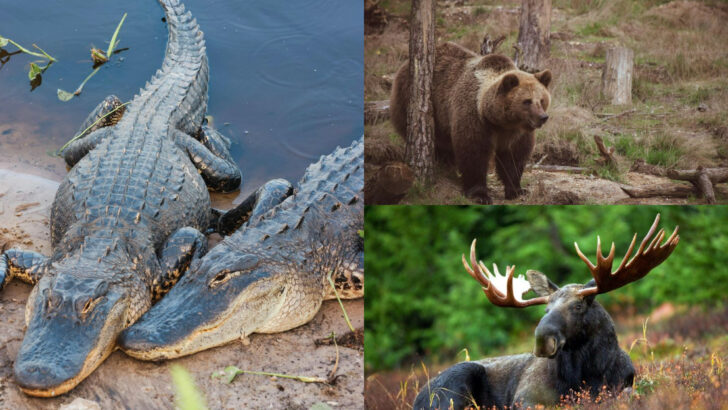Coyotes are cunning creatures, often prowling urban areas in search of food. Protecting your home and loved ones from these stealthy animals can be a priority for many.
While fences and alarms play their part, certain animals have a unique knack for keeping coyotes at bay. From the stealthy to the strong, these animals use their natural instincts to deter unwanted visitors.
Here’s a list of 20 fierce animals that naturally scare off coyotes and help maintain the safety of your home.
Donkeys
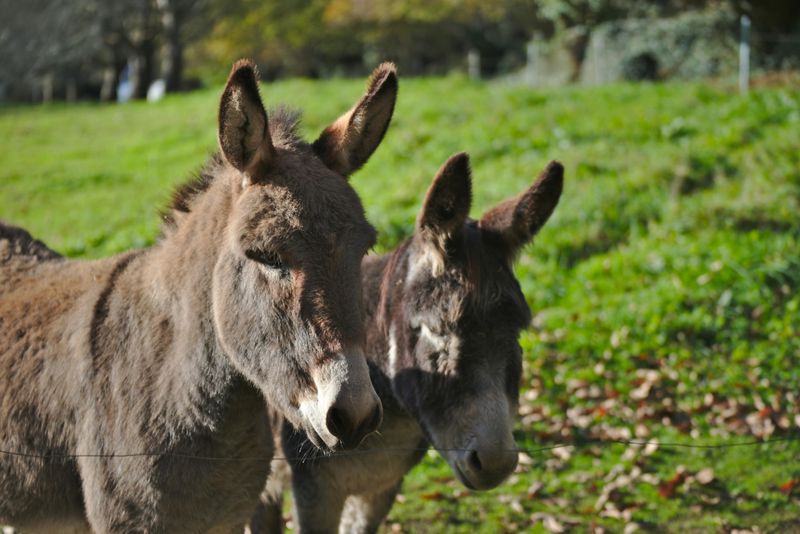
Often underestimated, donkeys are surprisingly effective at keeping coyotes away. With their keen senses and loud brays, they act as natural alarms.
Donkeys have a strong dislike for canines and won’t hesitate to defend their territory. When a coyote approaches, donkeys can become aggressive, using their hooves and teeth to drive the intruder away.
Their intimidating presence alone can deter many predators. In rural areas, farmers often rely on donkeys as guardians for livestock, showcasing their reliability.
A pair of these vigilant creatures can offer peace of mind and added security to your home.
Llamas
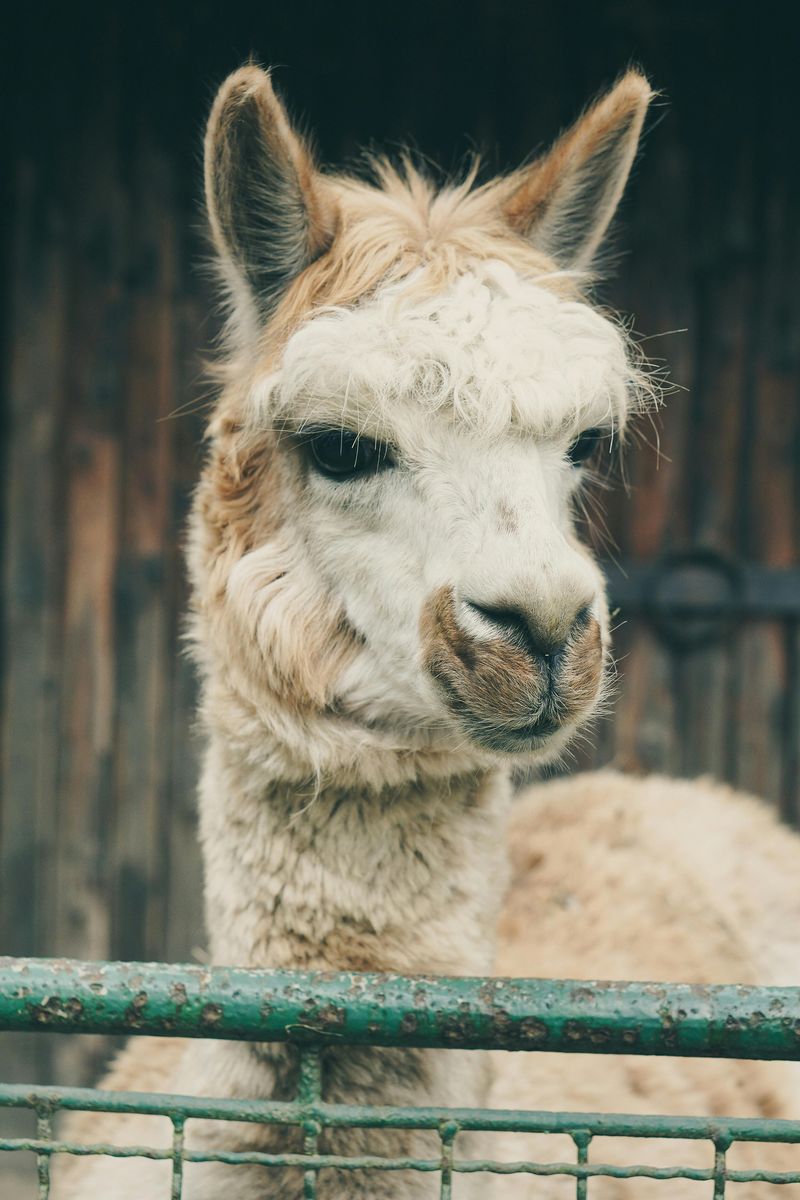
Llamas are not just for wool; they’re excellent herd protectors. Naturally curious and social, llamas integrate well with livestock, always on the lookout for danger.
Their imposing size and confident demeanor make them formidable against intruders. When a threat is detected, llamas instinctively position themselves between the herd and the danger.
Their loud alarm calls alert other animals and humans alike. With a combination of strength and intelligence, llamas effectively discourage coyotes from coming too close.
Many ranchers trust llamas as guardians, appreciating their dual role as protectors and companions.
Ostriches
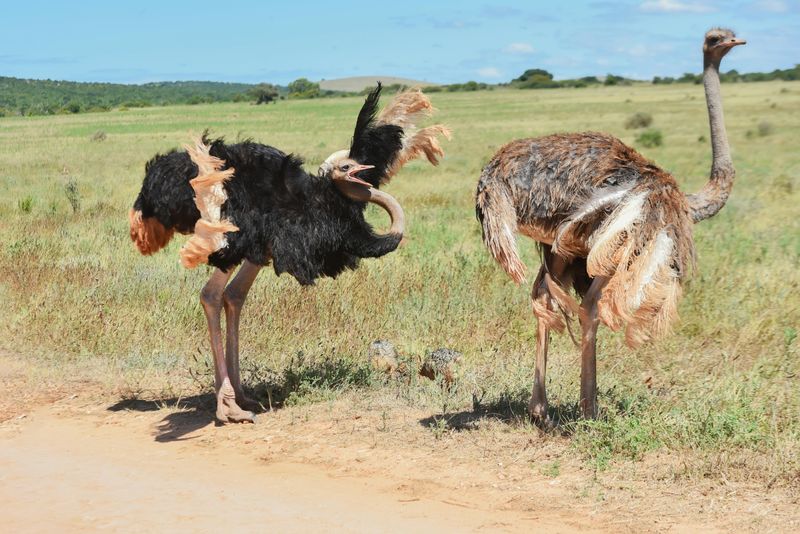
These flightless birds are more than just fast runners; they are fearless protectors. Equipped with powerful legs, ostriches can deliver a kick strong enough to deter even the boldest of coyotes.
Their height gives them an excellent vantage point, allowing them to spot predators from afar. Despite their seemingly gentle nature, ostriches possess a strong survival instinct, ready to defend their territory aggressively.
Farms and properties with ostriches often notice a decline in predator visits, benefiting from their intimidating presence. Beyond their protective instincts, ostriches add a unique charm to any landscape.
Alpacas
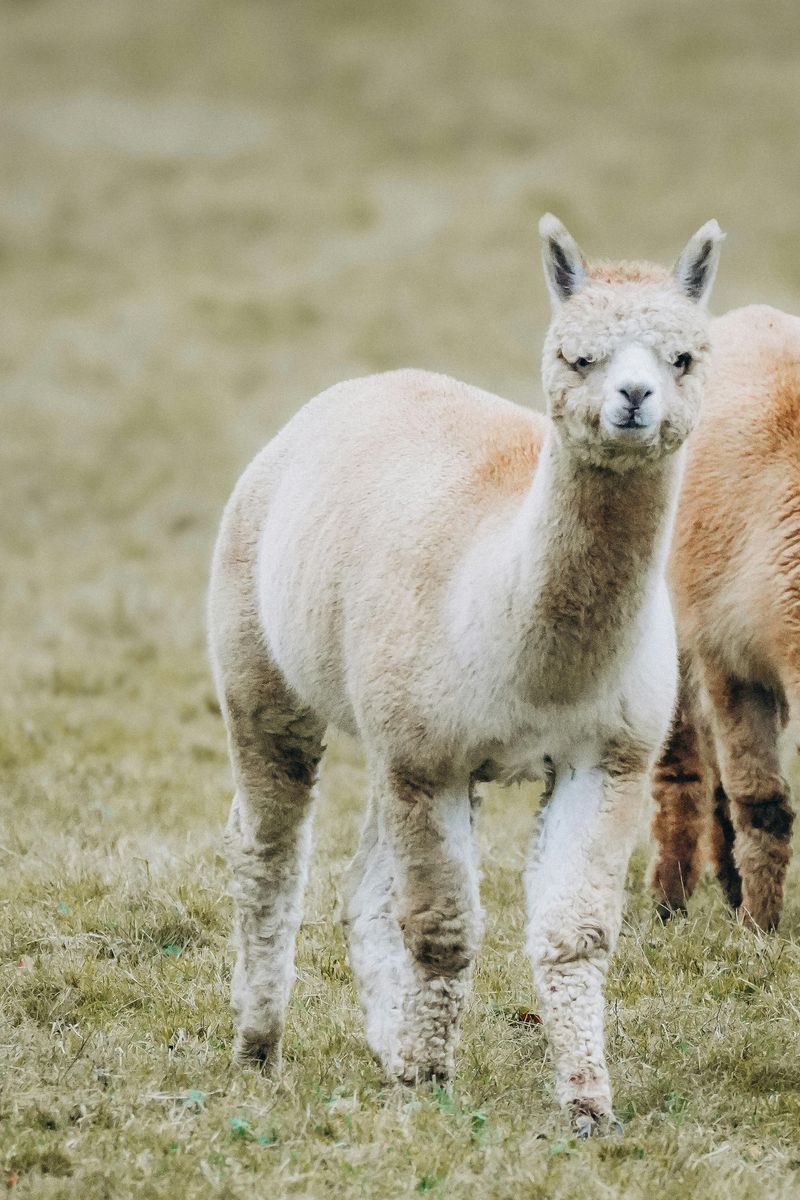
Not only prized for their fleece, alpacas are adept at safeguarding their flock. These gentle creatures are known for their acute awareness of surroundings.
When a coyote lurks, alpacas become vigilant, using sharp vocalizations to alert the group and ward off intruders. Their social nature ensures that they work well in groups, providing cohesive protection.
By forming a united front, alpacas can effectively intimidate and deter predators. Their presence in pastures adds both beauty and security, making them a favored choice among those seeking a natural guardian for livestock.
Bears
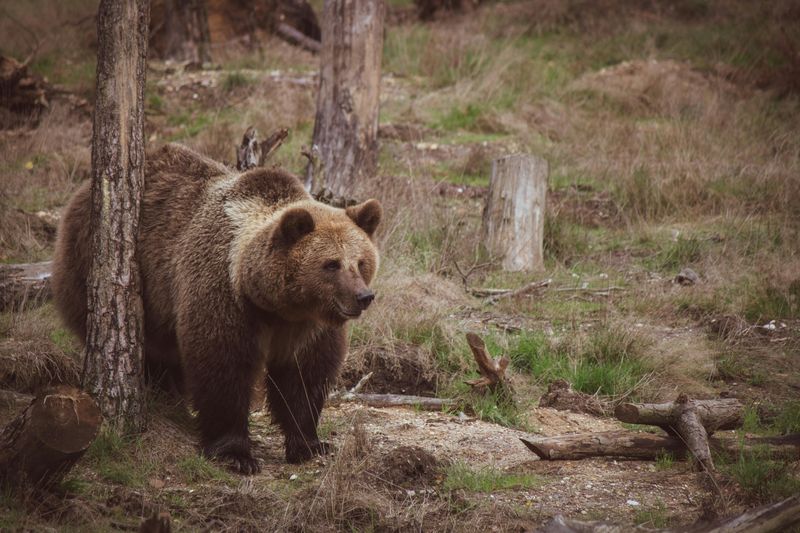
Bears, with their sheer size and strength, are among the most formidable animals in the wild. Their presence alone can be enough to deter a wide range of predators, including coyotes, who prefer to avoid confrontation with such powerful creatures.
Bears are highly territorial and will defend their area aggressively, often patrolling large stretches of land. This behavior keeps many smaller predators at a distance.
Living in proximity to bear habitats can deter coyotes effectively, ensuring that your home remains safe under the watchful eye of these majestic giants.
Alligators
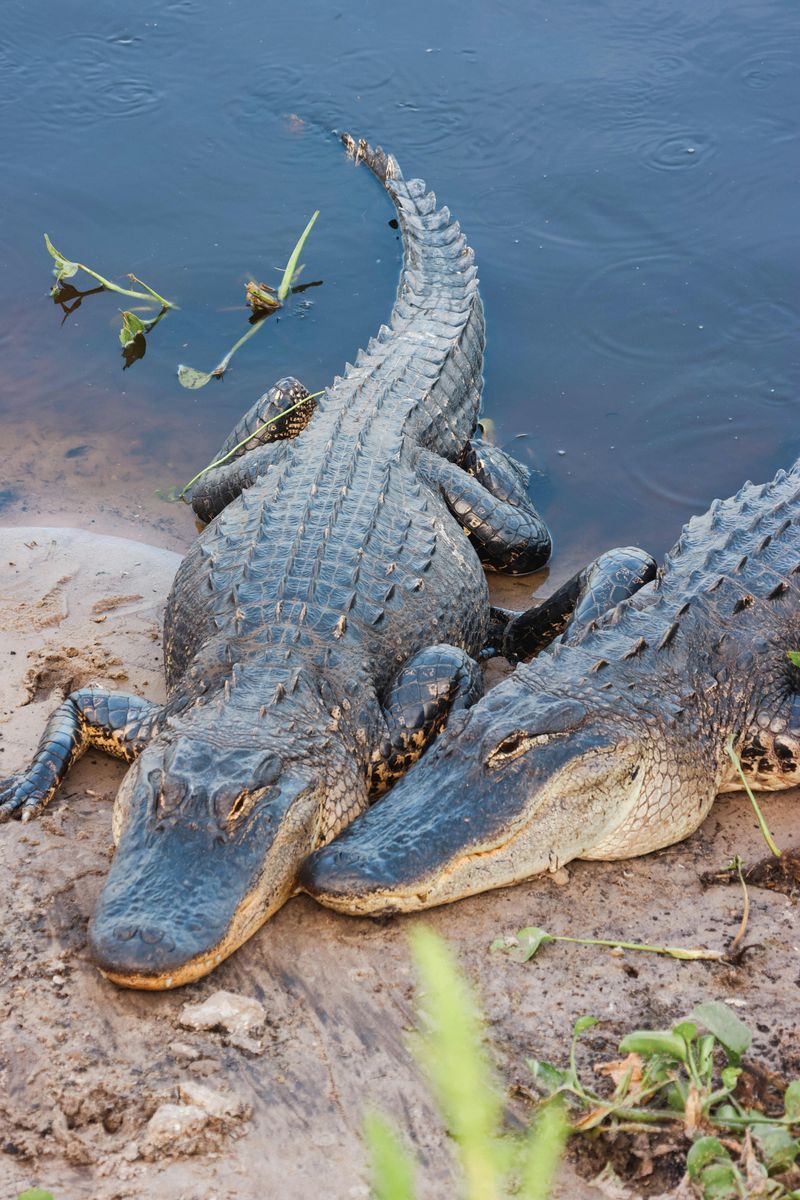
Alligators are apex predators in their aquatic habitats, and their presence alone is enough to make coyotes wary. These reptiles are stealthy hunters, using their camouflage to surprise unsuspecting prey.
In regions where alligators are native, their presence can naturally keep coyotes at a distance, as coyotes will avoid areas where they might fall victim to an alligator’s powerful jaws.
This natural deterrence is beneficial for landowners near swamps and marshes, where alligators are common.
Peacocks
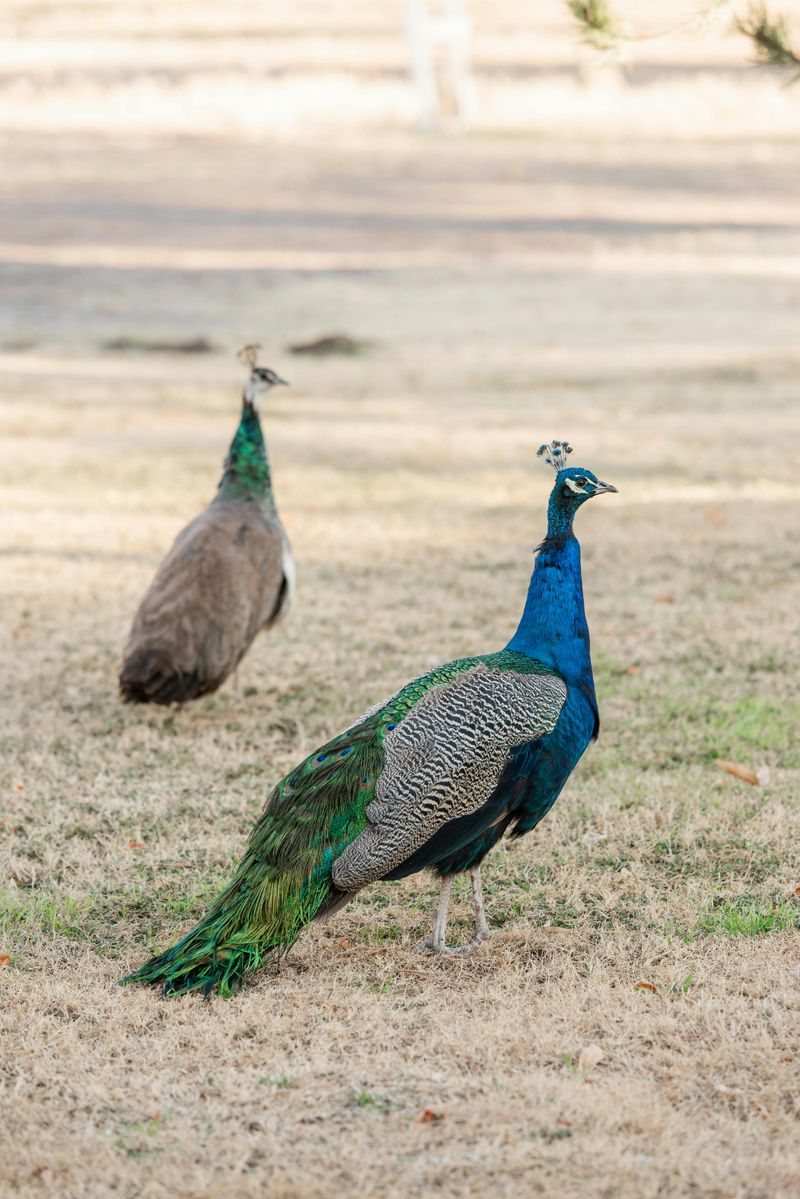
Beyond their beauty, peacocks are surprisingly effective at warding off coyotes. Their loud, piercing calls can be heard over long distances, serving as an early warning system.
Peacocks are highly alert and will often position themselves in vantage points to watch for approaching threats. When alarmed, they don’t hesitate to make their presence known, intimidating potential predators.
Their striking plumage can also act as a visual deterrent. In gardens and estates, peacocks are not only ornamental but also functional, adding a layer of security with their vigilant nature.
Turkeys
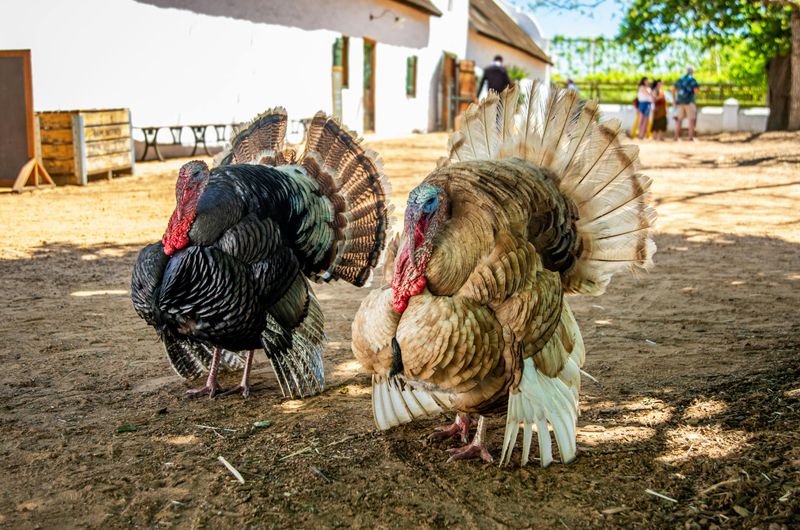
It might come as a surprise, but turkeys are quite formidable when protecting their territory. When faced with danger, turkeys can become aggressive, using their size and numbers to deter predators like coyotes.
Their gobbles serve as both communication and warning to the flock and nearby inhabitants. Turkeys are excellent at detecting subtle changes in their environment, making them keen sentinels.
Their group dynamics and ability to work together amplify their effectiveness. For those living near wooded areas, turkeys can be a natural asset in maintaining a safe perimeter around the home.
Cattle
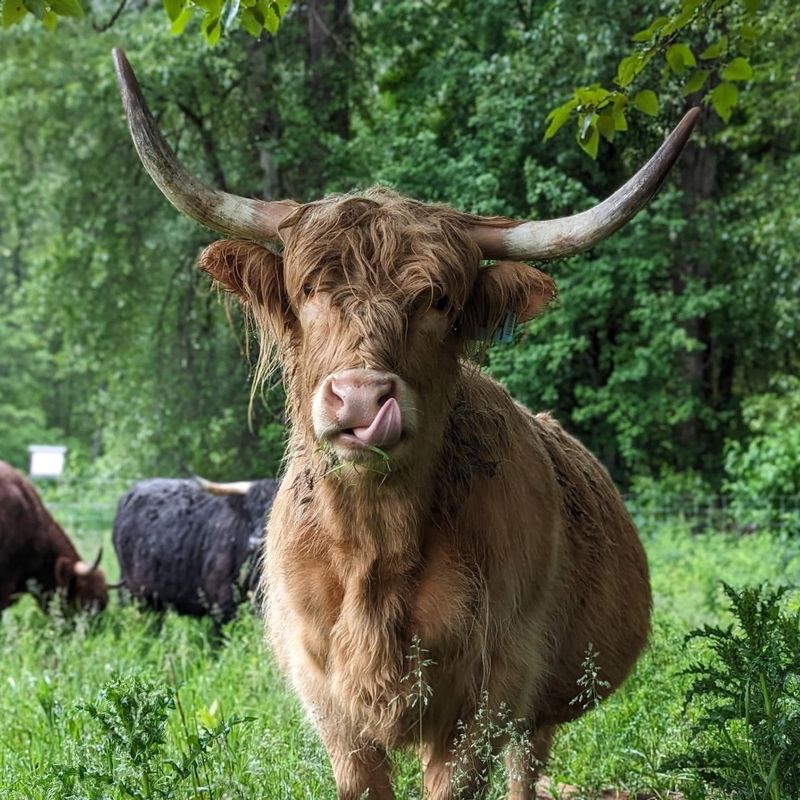
Cattle, especially when in herds, create a formidable barrier against predators. Their sheer size and numbers can easily intimidate coyotes, making them think twice before approaching.
Cattle are protective of their young and will often form a circle around them in the face of danger. This defensive behavior, combined with their ability to charge, makes them a significant deterrent.
Ranchers appreciate the natural security cattle provide, allowing them to graze without constant concern. While primarily raised for their produce, cattle can serve as an unexpected yet effective line of defense.
Horses
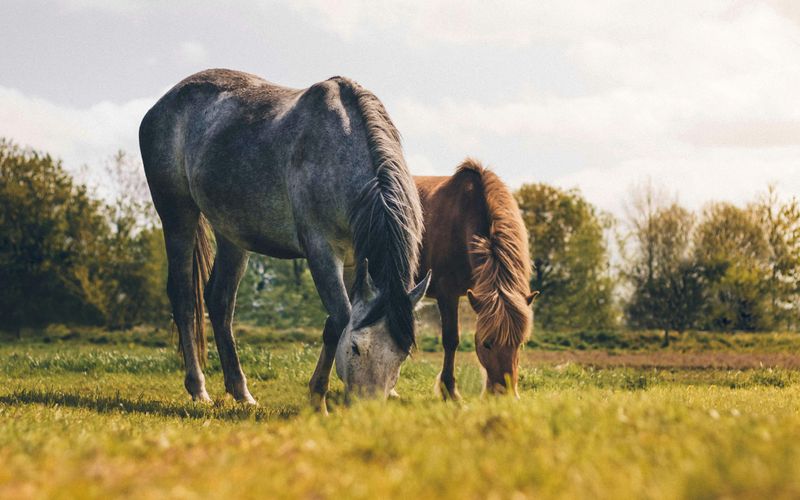
Beyond their grace and beauty, horses possess a protective nature that can deter coyotes. These animals are known for their keen senses and ability to read their environment.
In the presence of a threat, horses can become highly defensive, using powerful kicks to ward off intruders. Their imposing stature and speed make them a challenging target for any predator.
Horses often remain vigilant, ready to alert others with distinct vocalizations. In equestrian properties, their presence alone can discourage unwanted guests, adding an elegant yet fierce safeguard to their surroundings.
Dogs
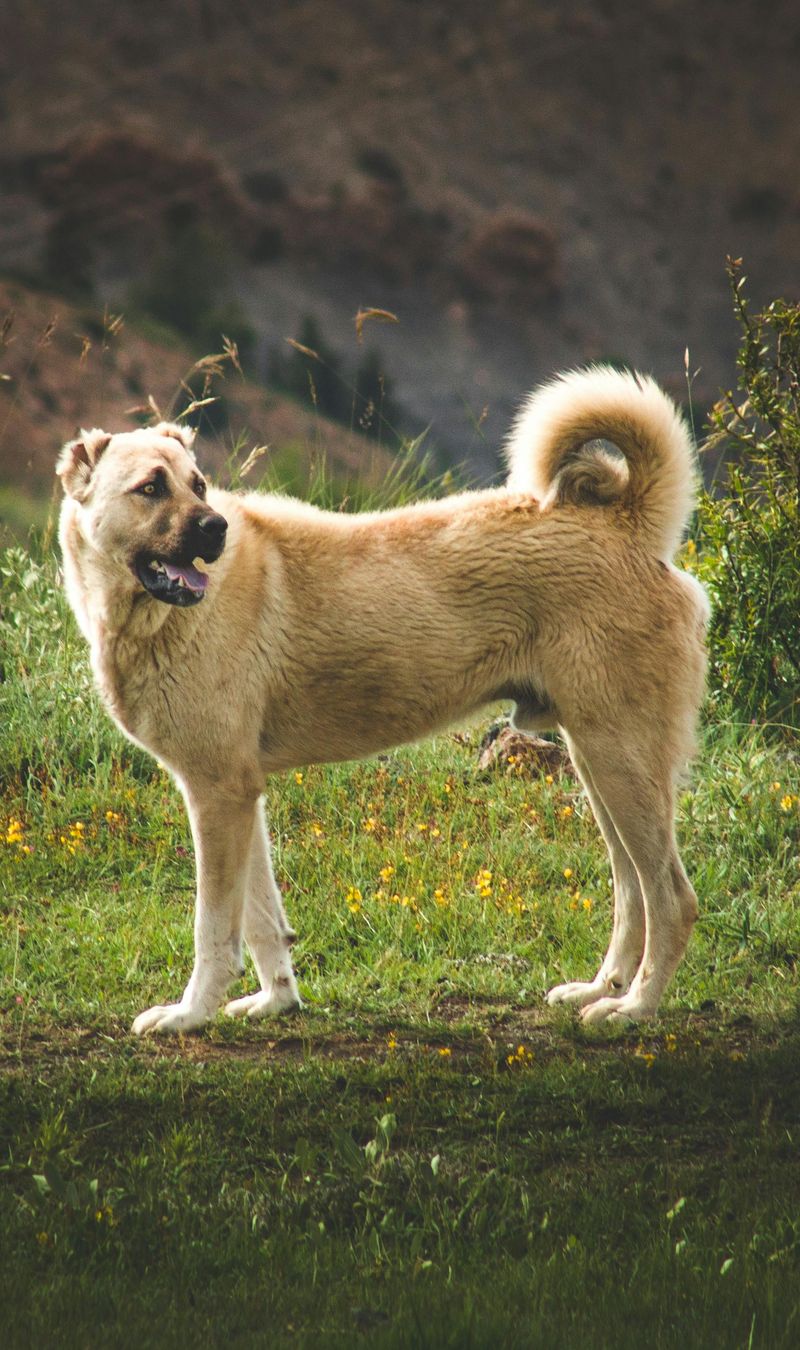
Man’s best friend is also a staunch protector against coyotes. Various breeds, especially livestock guardian dogs, are bred specifically to shield flocks from predators.
With their acute senses, dogs can detect coyotes long before they become a threat. They are fearless in their defense, often barking loudly to deter encroaching animals.
Dogs’ loyalty ensures they’ll stand their ground, protecting both property and family. Their companionship and protective instincts make them invaluable in rural settings.
Beyond safeguarding, dogs offer a comforting presence, blending security with the warmth of friendship.
Wolverines
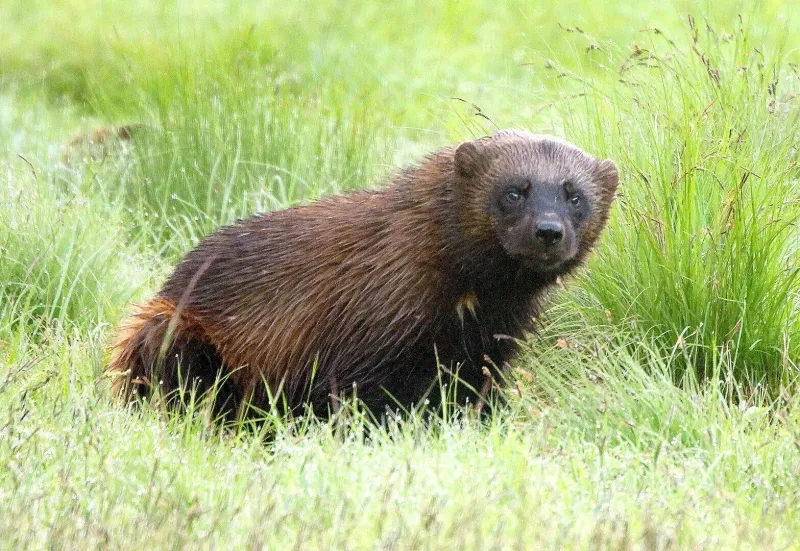
Wolverines are known for their boldness and tenacity, earning them a fearsome reputation in the wild. Despite their relatively small size, they are not afraid to confront larger predators, including coyotes.
Their robust build and strong jaws make them formidable opponents.
A wolverine’s presence in a territory is enough to intimidate coyotes, as they are known to defend their food aggressively. This aggressive behavior extends to encounters with other predators, ensuring that coyotes steer clear of these fierce mammals.
Moreover, wolverines are highly adaptable and can survive in harsh environments, giving them an edge over coyotes in various terrains. This adaptability ensures that they can maintain their territory effectively.
Emus
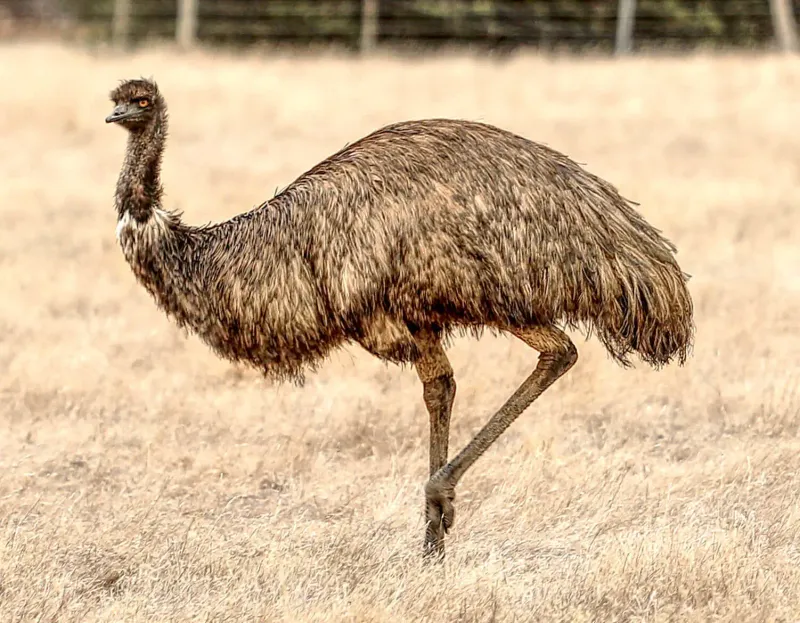
Emus, with their towering height and powerful legs, are unexpected yet effective deterrents against coyotes. Their curious nature keeps them alert to potential threats, and they are known to be aggressive when provoked.
Emus can deliver a strong kick, which is often enough to send a coyote running. Their presence alone, due to their size, can be intimidating to many predators.
In regions where emus are kept, they serve as both a unique attraction and a practical protector. Their quirky demeanor and formidable defense skills make them a fascinating addition to any property.
Bison
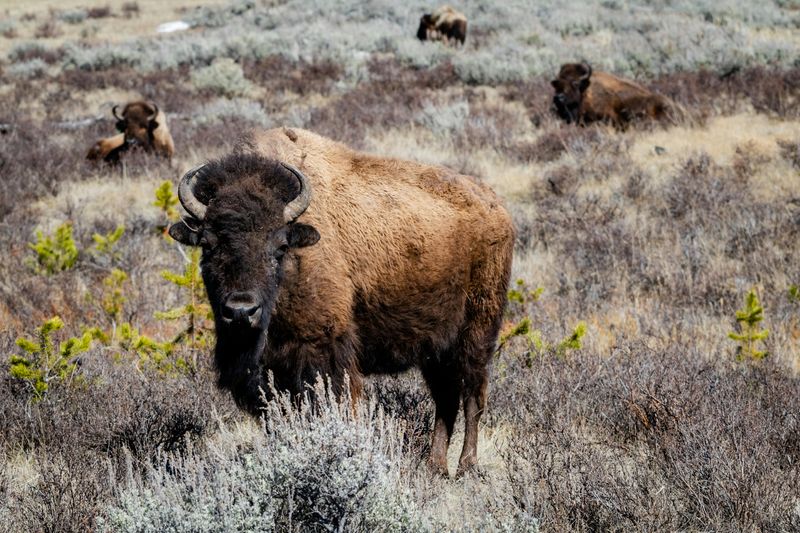
The bison, renowned for its sheer size and strength, serves as an imposing deterrent to coyotes. Occupying open fields, these massive creatures use their bulk and horns to fend off potential threats.
It’s fascinating how their powerful presence can create a secure perimeter around the land they inhabit.
Their protective instincts are not just limited to themselves. Bison often roam in herds, where they collectively intimidate intruders.
These groups create a formidable front, making it a challenge for coyotes to even consider approaching. It’s a testament to their natural defensive behavior.
When thinking of a protective animal, a bison might not be the first to come to mind. However, their ability to create a barrier with their size is unmatched, and their presence alone can discourage any coyote from venturing too close.
Bees
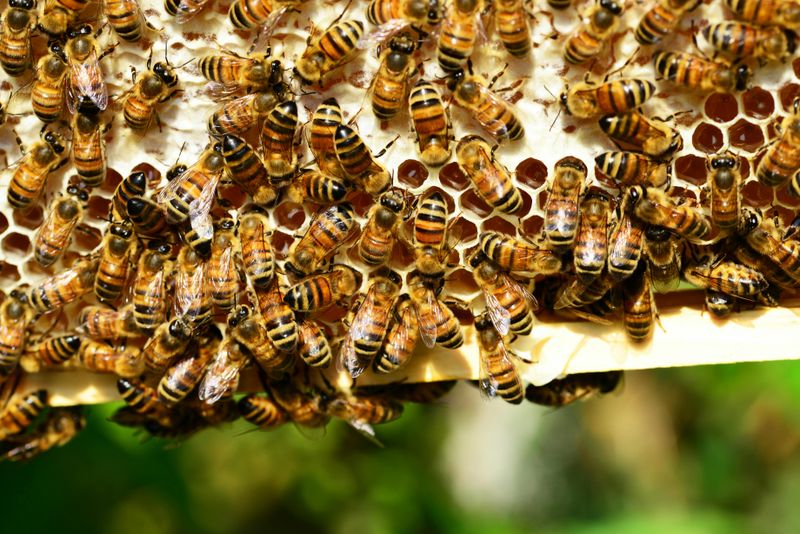
Bees, though small, can be an intimidating presence for coyotes when swarming. Their buzzing and aggressive defense tactics are enough to deter many larger animals.
While bees don’t intentionally target coyotes, their protective nature over their hive creates a formidable barrier. The presence of beehives can encourage coyotes to steer clear, avoiding potential conflict.
Additionally, bees significantly contribute to the health of gardens and crops, enhancing the overall ecosystem. Their dual role as pollinators and protectors makes them a beneficial addition to any landscape seeking to naturally manage pests.
Moose
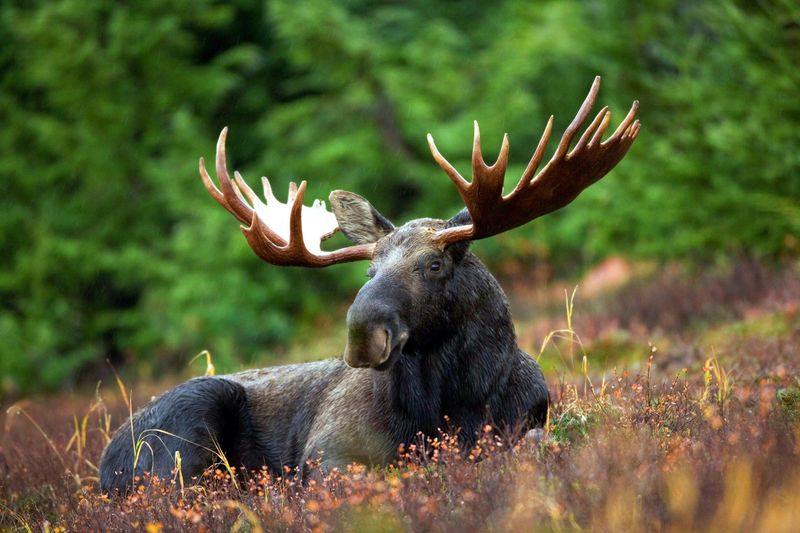
Moose are the giants of the forest, known for their impressive size and powerful antlers. These attributes make them more than capable of scaring off coyotes.
Typically solitary, moose have a strong territorial instinct, often charging potential threats with great force. Their imposing presence and ability to defend their area make them an excellent deterrent.
Their habitat near lakes and forests provides strategic advantage points to monitor their surroundings. With their vigilant nature, moose are adept at keeping coyotes at bay, ensuring the safety of the environment they call home.
Foxes
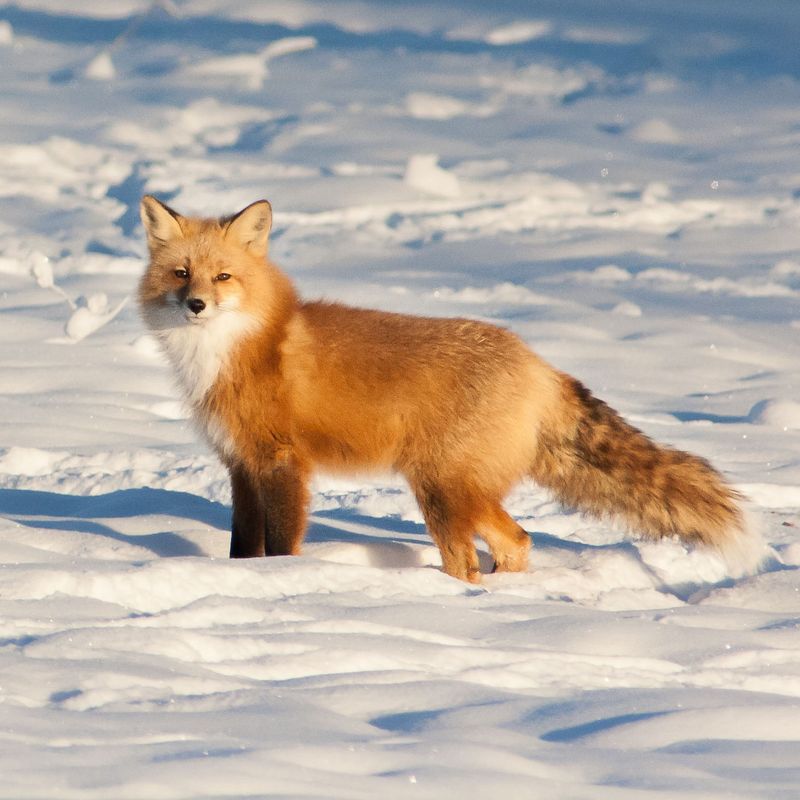
Though smaller than coyotes, foxes are quick and clever, often outsmarting larger predators. They possess acute senses and a keen understanding of their environment, allowing them to avoid confrontations.
Foxes can create competition for resources, subtly influencing coyote behavior and territory choices. Their cunning nature often leads them to coexist near human habitats, indirectly deterring coyotes due to shared spaces.
By understanding and manipulating their surroundings, foxes maintain a balance in the ecosystem. Their role as both predator and prey makes them a dynamic presence in the wild.
Raccoons
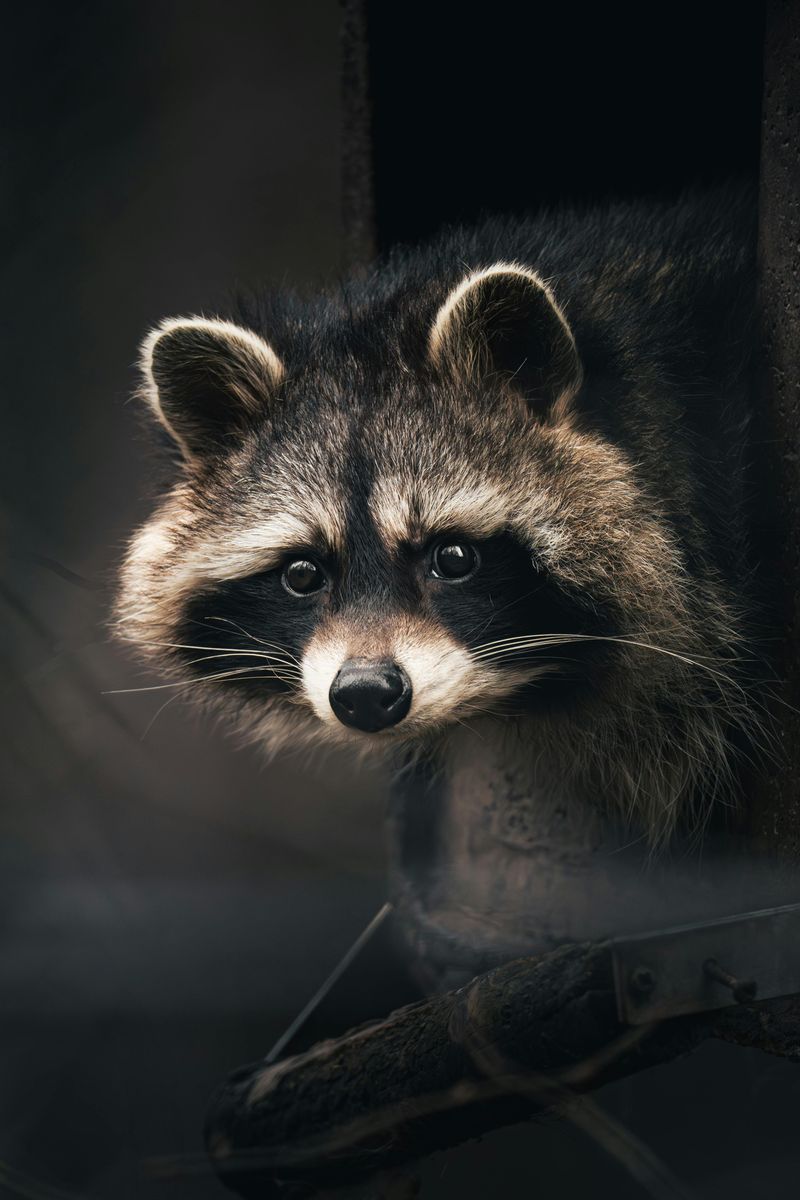
Raccoons, with their dexterous paws and curious nature, are adept at navigating environments that coyotes also frequent. Although not aggressive towards coyotes, their adaptability can create competition, altering predator patterns.
Raccoons are excellent at finding food, which can impact the availability for other animals. Their resourcefulness often leads them to exploit opportunities that may deter coyotes from settling nearby.
Raccoons contribute to the complexity of an ecosystem, subtly influencing the presence of other wildlife. Their presence, combined with their nocturnal habits, can shift the balance in favor of human habitation.
Wild Boar
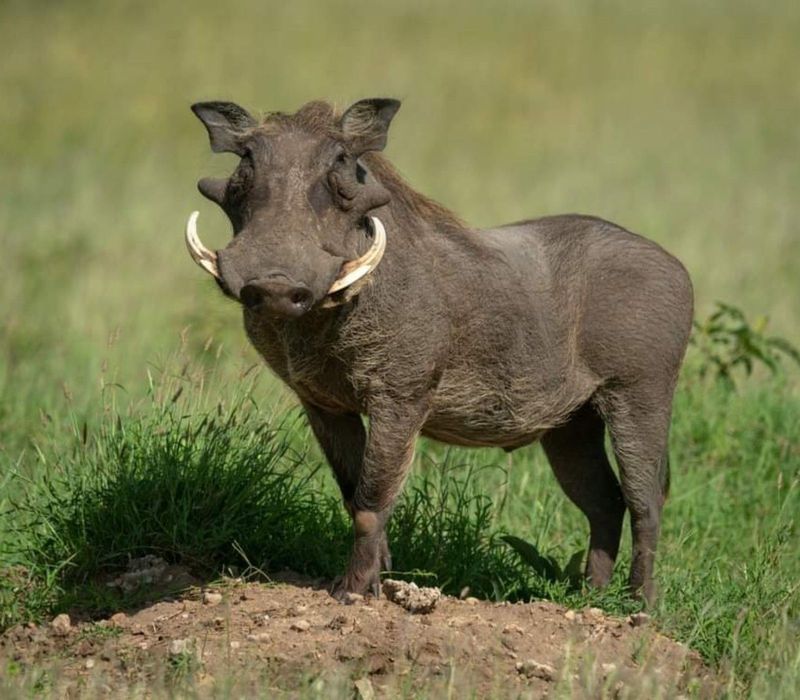
Wild boars are fierce creatures known for their aggressive nature and powerful build, making them a strong adversary for coyotes. These animals possess sharp tusks that can inflict serious damage, which they aren’t shy to use if threatened.
Their natural habitat often includes dense forests, where they forage and roam. This environment gives them an advantage in maneuverability and defense, allowing them to effectively guard their territory against intruders like coyotes.
The wild boar’s reputation for fearlessness and tenacity in defending its ground is well-earned. With their keen sense of smell and strong familial bonds, they are always on high alert, ready to protect their own.
Goats
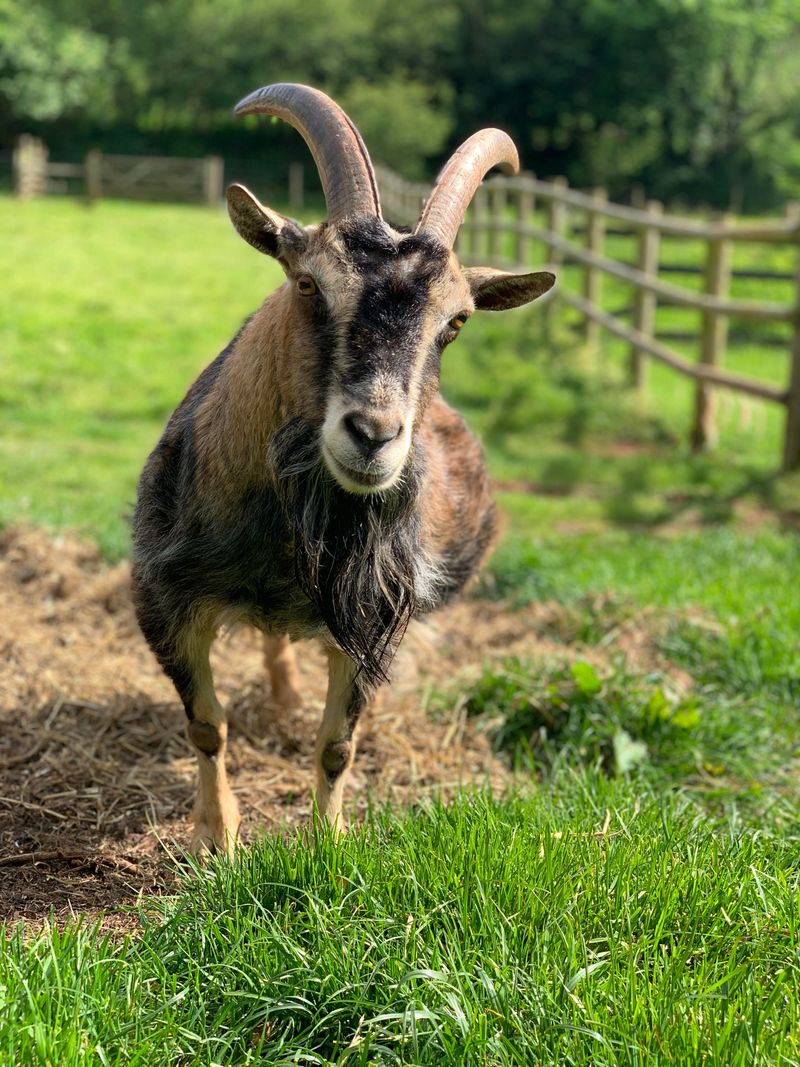
Goats are known for their spirited nature and tenacity, traits that make them unlikely deterrents to coyotes. Their curiosity often keeps them vigilant, ready to alert others to any unusual activity.
In groups, goats can become defensive, using their horns to fend off potential threats. Their agility and climbing ability allow them to escape danger quickly, leading predators on a challenging pursuit.
Goats contribute to land management by keeping vegetation in check, which can indirectly influence coyote behavior. Their lively presence adds both functionality and charm to diverse landscapes.

